Asbestos Audits
As an employer you have a legal responsibility to manage the risk of asbestos in your workplace. Before being banned in Australia in 2003, asbestos was commonly used in in a large variety of building products which remain present in many buildings throughout Australia, either accessible or hidden.
What Is The Purpose Of An Asbestos Audit?
Asbestos presents a significant risk when it is in poor condition or disturbed and its fibers become airborne. An asbestos audit will fulfill your duty to identify and assess, as far as reasonably practicable, the risk of asbestos in the workplace by locating ACM in any of your buildings and establishing the condition and likelihood of disturbance.
Specifically, your asbestos audit will tell you:
- The location of ACM
- The type of asbestos within these materials
- The condition of the ACM and associated risks
- The action required to make the ACM safe
Asbestos Audits are not optional, they are a legal requirement.
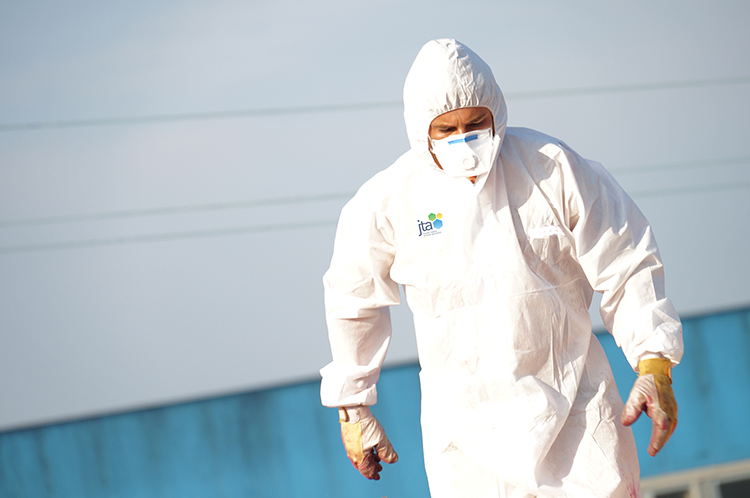
What are Asbestos Containing Materials (ACM)?
Asbestos is a naturally-occurring mineral fibre and was used extensively because it was flexible, strong, affordable and could insulate from heat and electricity. Australia used to have one of the highest rates of asbestos use per person in the world until the mid-1980s.
ACM is any material, object, product or debris that contains asbestos. As asbestos was so widely used, many buildings or renovations from before 1990 contain materials with asbestos.
Also, whilst the importation of ACM is prohibited, there have been instances where imported building materials have contained asbestos. Some countries are still mining asbestos today.
Asbestos can take different forms, and some physical states of asbestos are more dangerous than others. ACM are either friable or non-friable.
Friable asbestos – higher risk
Friable asbestos products are generally quite loose and, when dry, can be crumbled into fine material or dust with light pressure. These products usually contain high levels of asbestos, which is loosely held in the product and asbestos fibres can be easily released into the air. If disturbed, friable asbestos products are dangerous because the asbestos fibres become airborne very easily, and may be inhaled by people living or working in the area.
Non-friable asbestos – lower risk
Non-friable asbestos products are solid, rigid, and cannot be crumbled, pulverised or reduced to powder by hand pressure. The asbestos fibres are tightly bound within the product and are not easily released into the air. When they're in good condition, non-friable asbestos products do not normally release any asbestos fibres into the air. They are considered low risk, as long as appropriate safety precautions are used when they are disturbed. However, demolition or uncontrolled disturbance can increase the risk by creating airborne respirable asbestos fibres.
What is the Asbestos Audit Process?
The highly regulated nature of asbestos necessitates a partner who is always completely up to date with all the regulations and legislation. JTA’s skilled Occupational Hygienists have the expertise and knowledge to deal with all aspects of asbestos and provide practical advice on how to manage it properly, safely and in compliance with legislative requirements.
Each State and Territory has their own requirements in relation to asbestos however, generally, there are two situations which require an asbestos audit to be conducted:
General Asbestos Audit
Known as a Division 5 Asbestos Audit in Victoria.
If asbestos is present in your buildings or you suspect it is, you must conduct an asbestos audit as part of your risk management to identify the type, location, condition and friability of ACM, to ensure employees working within the building and contractors who may work on the building are not at risk of exposure to asbestos. This is a non-invasive audit and fulfils the duty of the employer/PCBU to identify and assess, as far as reasonably practicable, the risk of asbestos in the workplace.
Demolition/ Refurbishment Asbestos Audit
Known as a Division 6 Asbestos Audit in Victoria.
This is a more invasive inspection, which expands the general asbestos audit to include the identification of any concealed or hidden asbestos that may be disturbed during the planned demolition/ refurbishment works. This is a legal requirement before carrying out works where asbestos is present or suspected in the building or has been identified elsewhere at the workplace.
Our Asbestos Audit Includes:
- A site visit and inspection to undertake a visual assessment of all buildings to identify, as far as practicable, the type, location and condition of asbestos present
- The collection of samples of representative suspect materials
- An independent NATA-accredited laboratory analysis of samples
- An audit report containing an asbestos register, a qualitative risk assessment associated with the identified asbestos, recommendations to assist in controlling any asbestos exposure risks and recommendations to assist in complying with the relevant legal requirements
As part of our ongoing service, we can inform you when you need another Asbestos Audit, identify when it’s necessary to review your Asbestos Register, help you develop and maintain an Asbestos Management Plan, conduct Asbestos Air Monitoring, provide an Asbestos Removal Clearance Certificate or present tailored Asbestos Awareness Training.
An asbestos audit must be conducted by a competent person. A competent person is someone who has acquired the knowledge and skills to identify asbestos and ACM from training, qualifications, or experience. In some jurisdictions an Asbestos Assessors license is required to conducte asbestos audits.
A sample must only be analysed by a National Association of Testing Authorities (NATA) laboratory accredited for the relevant test method, a laboratory approved by the regulator in accordance with guidelines published by Safe Work Australia or a laboratory operated by the regulator.
What is an Asbestos Register?
An asbestos register is a critical document that lists all identified or assumed asbestos in a workplace. Its purpose is to provide information on the location and type of any asbestos in the workplace to avoid accidental disturbance and exposure.
Generally, an asbestos register will record:
- Location of the asbestos
- Likely source of asbestos that is not fixed or installed
- Type of ACM
- Whether the ACM is friable or non-friable
- The condition of the ACM
- Whether the ACM is likely to sustain damage or deterioration
- Any activities likely to be carried out that could damage or disturb the asbestos
- Details of inaccessible areas that are likely to contain asbestos
- The date of each identification
Your asbestos register must be easily accessible at the workplace at all times, either online or a paper copy, and be readily available to all workers, contractors, and anyone likely to come into contact with ACM onsite.
You must ensure that the asbestos register is readily accessible to:
- Any workers
- Health and safety representatives
- PCBUs who have carried out or intend to carry out work at the workplace
What are my Asbestos Audit legislative requirements?
All workplace buildings are legally required to have an asbestos register and for it to be regularly maintained to ensure the ongoing management of ACM in your workplace and the information in the register is always up to date.
A workplace must review and revise their asbestos register at least once every five years or earlier if:
- Further asbestos or ACM is identified at the workplace
- Asbestos is removed from, disturbed, sealed or enclosed at, the workplace
- Before any demolition or refurbishment is carried out
When do I need an Asbestos Management Plan?
An Asbestos Management Plan is required whenever asbestos has been identified or is presumed to be present in a workplace. It should outline how asbestos risks are controlled and detail procedures for emergencies, maintenance, and monitoring. It will include a link to the asbestos register, the locations of signs and labels, safe work procedures and control measures; and procedures for detailing accidents, incidents or emergencies. A person with management or control of the workplace must ensure that the asbestos management plan is maintained to ensure the information in the plan is up to date.
Your Asbestos Management Plan needs to be updated at least once every 5 years or when:
- There is a review of the asbestos register or a control measure
- Further asbestos or ACM is identified
- Asbestos is removed, disturbed, sealed or enclosed
JTA has helped businesses comply with asbestos regulations for over 35 years. As asbestos specialists, we have a proven track record in identification, assessment and management. Our consultants are all highly trained and experienced in asbestos audits.
FAQs
Asbestos fibers are hazardous when inhaled leading to serious respiratory diseases such as asbestosis, lung cancer, and mesothelioma. The risks increase with the amount of exposure to airborne respirable fibers.
Yes, a licensed asbestos removalist must be used to remove any asbestos. Although unlicensed removal of limited amounts of non-friable asbestos or asbestos-contaminated dust is permitted, it is not recommended. It is safer for a licensed asbestos removalist to perform the work.
If you are having Class A asbestos (friable) removed you must have an independent person carry out air monitoring, with specific licensing requirements in some jurisdictions. If you are having non-friable asbestos removed, you’re not legally required to conduct air monitoring. However, we recommend that you have a ‘competent person’ conduct air monitoring, especially near sensitive area such as schools, public areas, healthcare, etc.
The PCBU/ Employee must obtain a clearance certificate that stipulates that an area is safe for the workforce to return. This is a written statement following asbestos removal work that confirms that the specified ACM has been removed and the area cleaned of any visible asbestos containing debris associated with the removal. The clearance certificate must be completed by an independent person, requiring an Asbestos Assessors Licenses in some circumstances, before any workers return.
Stop work immediately to prevent disturbing the material. Engage a qualified Occupational Hygienist to assess the material and determine the appropriate action which may include sampling, analysis, and if confirmed as asbestos, removal following legal and safety protocols.
If it is reasonably practicable to do so, you must indicate the presence and location of any asbestos or ACM by a label.
Employers must provide information, instruction and training to all employees that may encounter asbestos in the workplace. Instruction should include the controls required to be implemented when working with and around ACM and what to do in the event of an incident involving ACM. Contractors working at the workplace should also be provided with training on how asbestos is managed at that workplace.
Other Asbestos Services
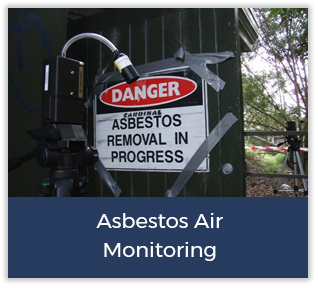
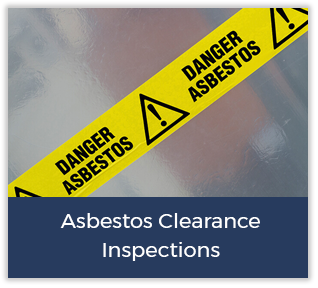
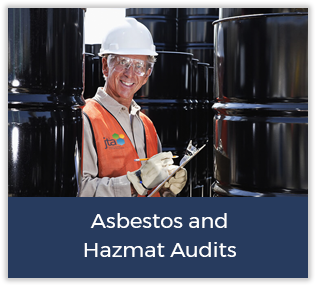
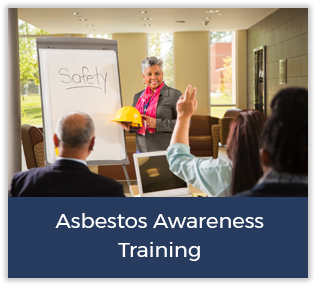
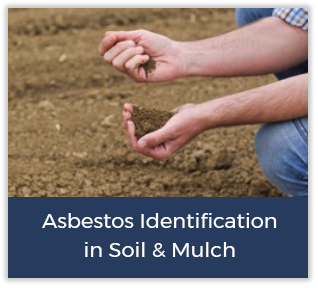
Call 1 300 856 282
Speak to our friendly team
Ask a Question
Use our online enquiry form for a quick quote
Newsletter Sign up
Get the latest legislation changes and news updates









